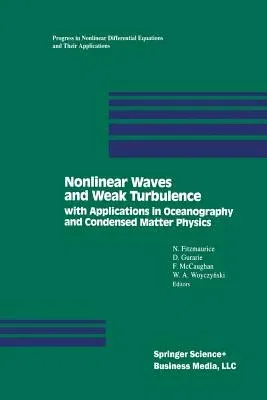Fitzmaurice
(Author)Nonlinear Waves and Weak Turbulence: With Applications in Oceanography and Condensed Matter Physics (Softcover Reprint of the Original 1st 1993)Paperback - Softcover Reprint of the Original 1st 1993, 6 October 2012

Qty
1
Turbo
Ships in 2 - 3 days
In Stock
Free Delivery
Cash on Delivery
15 Days
Free Returns
Secure Checkout
Part of Series
Progress in Nonlinear Differential Equations and Their Appli
Print Length
345 pages
Language
English
Publisher
Birkhauser
Date Published
6 Oct 2012
ISBN-10
1461267110
ISBN-13
9781461267119
Description
Product Details
Book Edition:
Softcover Reprint of the Original 1st 1993
Book Format:
Paperback
Country of Origin:
NL
Date Published:
6 October 2012
Dimensions:
23.39 x
15.6 x
1.93 cm
ISBN-10:
1461267110
ISBN-13:
9781461267119
Language:
English
Location:
Boston, MA
Pages:
345
Publisher:
Weight:
512.56 gm

